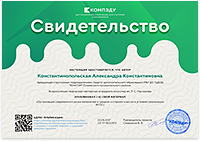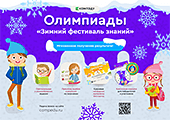Animals and birds on different continents.
Класс: 5 “А”
Место урока: 3/11
Тип урока: урок усвоения новых знаний
Цель урока: формирование грамматических навыков по теме «Образование наречий с помощью суффикса -ly», введение новой лексики по теме “Животный мир континенотов”.
Задачи урока:
Общеобразовательные:
развитие навыков монологической и диалогической речи;
формирование и развитие лексических навыков;
развитие грамматических навыков;
развитие навыков чтения, аудирования и письма.
Развивающие:
развитие коммуникативных навыков;
развитие памяти, внимания, мышления, воображения;
развитие инициативы в осуществлении иноязычной речевой деятельности;
умение оценить свои знания;
умение использовать полученные знания;
развитие познавательного интереса к предмету через содержание учебного материала.
Воспитательные:
воспитание познавательной активности;
развитие коммуникативной культуры поведения и общения;
воспитание внимательного отношения к собеседнику;
развитие культуры взаимоотношений при работе в парах;
содействие расширению кругозора учащихся;
создание комфортной среды для каждого ученика и положительной мотивации к изучению английского языка.
Прогнозируемый результат: предполагается, что к концу урока учащиеся смогут рассказать, какие животные живут на разных континентах и, используя новое грамматическое правило «Образование наречий с помощью суффикса -ly», смогут рассказать, как животные совершают различные действия.
Оборудование: компьютер, карта мира, распечатки «Транскрипция», фото диких животных, распечатки «Загадки», распечатки «Сравнение животных»,
Ход урока
Организационный момент
Good morning, children! I am glad to see you! I missed you.
Who’s absent today?
How are you today? How is your mood?
Children, today we have unusual lesson. We have a lot of guests. Don’t worry. Be active and hardworking as usual.
Речевая разминка
Children, look at the map.
What continents do you know? (Africa, Australia, Antarctica, Asia, Europe, North and South America)
Look at the map.
Take a piece of paper, read the transcription and glue the piece of paper in the right place.
What can you see on a map? (continents, jungle, oceans, deserts)
What is the digest desert in the world? Where is it?
What is the highest mountain in the world? Where is it?
What can you see in the jungle, oceans, deserts? Can you see animals in the jungle/ocean?
What animals do you know?
Введение нового лексического материала
Look at the blackboard!
This is Nick.
Nick lives in England but he likes travelling. When he travels, he takes a lot of photos. He likes taking photo of animals very much. Look at his photos.
What can you see on the pictures?
Children, do you like animals?
What do you think is the topic of our lesson?
The topic of our lesson is Animals and birds on different continents.
Today we will learn names of wild animals from different continents and say how they do things.
Open your book at page 84, Ex. 1
Let’s repeat after me.
Who wants to show his reading skills? (пара человек должна прочитать)
Where do these animals live? (на доске I think ostriches live in Africa )
Первичное закрепление нового лексического материала но теме.
Dear friend, I have some riddles for you. Try to guess them. Please, take these pieces of paper. Let’s guess these riddles about animals.
Now match the definitions with the words.
1. The animal that has a beautiful yellow skin with black stripes. (a monkey)
2. The animal that is always funny. (a tiger)
3. The animal that has a beautiful white skin with black stripes. (a crocodile)
4. The animal that has a long trunk. (an octopus)
5. It is green and big. It lives in the river. (a zebra)
6. I live in the ocean. I like to eat crabs. I can change colors. (an elephant)
7. They can jump very fast. They live in Australia. (a camel)
8. It has two humps, he does not often drink. (a kangaroo)
Looking good. I’m proud of you! Well done!
Ok. Let's talk about animals now. Which of the animals is bigger, which is stronger.
Answer my questions. Your task is to read the question and answer it. Don’t write anything, just answer the questions.
Who wants to start?
Which animal is stronger – an elephant or a bear?
Model: An elephant is stronger than a bear
Which animal is bigger – a whale or a dolphin?
Which animal is taller – a cheetah or a giraffe?
Which animal is smaller – a panda or a koala?
Which animal is longer – a lizard or a shark?
Which animal is cleverer – a cat or a dog?
Which animal is the most beautiful – a polar bear or a kangaroo?
V. Совершенствование навыков аудирования.
As you can see, we have a lot of wild animals. That’s why today we are going to learn more about them. Nick’ grandad is telling about a bird. Listen, read and guess the bird. (Key: penguins)
What is this bird?
Well done! You listened the text, guessed the riddle. Now, let’s read this text. Who wants?
P. 85, ex. 2
Изложение нового грамматического материала «Образование наречий с помощью суффикса -ly. »
They are slow. They walk slowly
Children, look at this word “slow”. What part of speech is this? It’s an adjective.
Let’s look at the word “slowly”. What part of speech is this? It’s an adverb.
How do we make adverbs?
We add -ly.
Read the Grammar secret together.
PB, p. 85, ex. 3.
Pay attention. You can find tasks on this rule in centralized testing.
Закрепление нового грамматического материала «Образование наречий с помощью суффикса -ly. »
Pupils! Form the adverbs by adding -ly.
(Teacher write some adjectives on the board (quiet, loud, beautiful, careful, quickly, good)).
Well done.
p. 85, ex. 4
Pupils! Now I propose you to work in pairs.
Ask and answer the questions about different animals in pairs.
(Teacher demonstrate how to make and answer the first question with a strong pupil.)
Физкультминутка
1) Let’s do some exercises for your eyes. (Гимнастика для глаз).
2) Pupils make a circle and walk round in the circle, following the teacher’s instructions, e. g. T: Walk slowly. Now run quickly. Now walk quietly. Swim slowly. Say ‘Yes’ loudly. Fly beautifully. Etc.
Совершенствование навыков чтения
Children what do you know about rhinos? Make sentences.
P. 86, ex.5a
Listen to Nick’s granddad and check your answers.
Children. Let’s read this text.
Rhinos are rare and interesting animals. They live in Africa and Asia. Rhinos live in the grasslands where the weather is always hot so they like water very much. They can stay in the river all day. Rhinos are very good swimmers. Rhinos eat grass and leaves. They walk a lot to find fresh grass. Rhinos are big and heavy animals, but they aren't slow. They can run very quickly!
True or false.
Rhinos live in Africa and Asia.
Rhinos live in the deserts.
Rhinos can stay in the river all day.
Rhinos aren’t good swimmers.
Rhinos eat meat.
Rhinos are slow.
They can run very quickly!
Рефлексия
My dear friends, unfortunately, the lesson is almost over. Look at the aims of our lesson. Did you learn names of wild animals and how they do things?
What animals do you know now?
Friends, look at these words. Go to the blackboard. Circle the adverbs, please. And then let’s read them. Who wants?
Quick loud happy slowly beautifully noisy slow noisily good well beautiful careful happy fast
My dear friends, unfortunately, the lesson is over.
In my opinion, it was very interesting lesson. What do you think about it?
Use this card and share your opinions about this lesson.
Pupils: I liked the lesson, because…
I’ve known a lot of wild animals.
I’ve known a lot of interesting and useful facts about the life of wild animals.
I like all English lessons.
It was interesting
It was interesting ,but difficult.
Now I
know new words about animals.
know where the animals live.
know some facts about rhinos.
know some facts about penguins.
know all about adverbs.
Подведение итогов урока.
Your homework p. 86, ex. 6 You must make up a riddle about one of the animals. Use this help box.
Ex. 3, p. 73 in your WB. Your task is to complete the sentences with the correct adverb. Be attentive, these sentences can help you. You can use them when you will make up a riddle.
As for your marks:
9, 10 – I’m satisfied of your work today. Your answers were full and nice. You were active during the lesson. Thank you for your work!
7,8 - Thank you for your work. You were active, but you had some mistakes. So, I’m going to give you 7,8
4, 5 – You should be more attentive and active. You’ve made a lot of mistakes, so I’ve given you 4/5
The lesson is over. You’ve done a good job today. Thank you for your work, you may be free. Have a nice day! See you tomorrow! Good bye, children!
Tell me, please, what animals live in these places?
In the jungles there are _______, ________.
In the sea there are ___________, _______ .
In the grasslands there are ______, _______ .
Animals can do a lot of different actions, but how? Let’s complete.
Crocodiles swim________________________ (good).
Ostriches run ___________________________ (fast).
Parrots speak ___________________________ (loud).
This bird is singing ______________________ (beautiful).
Pigs eat ________________________ (noisy).
10





